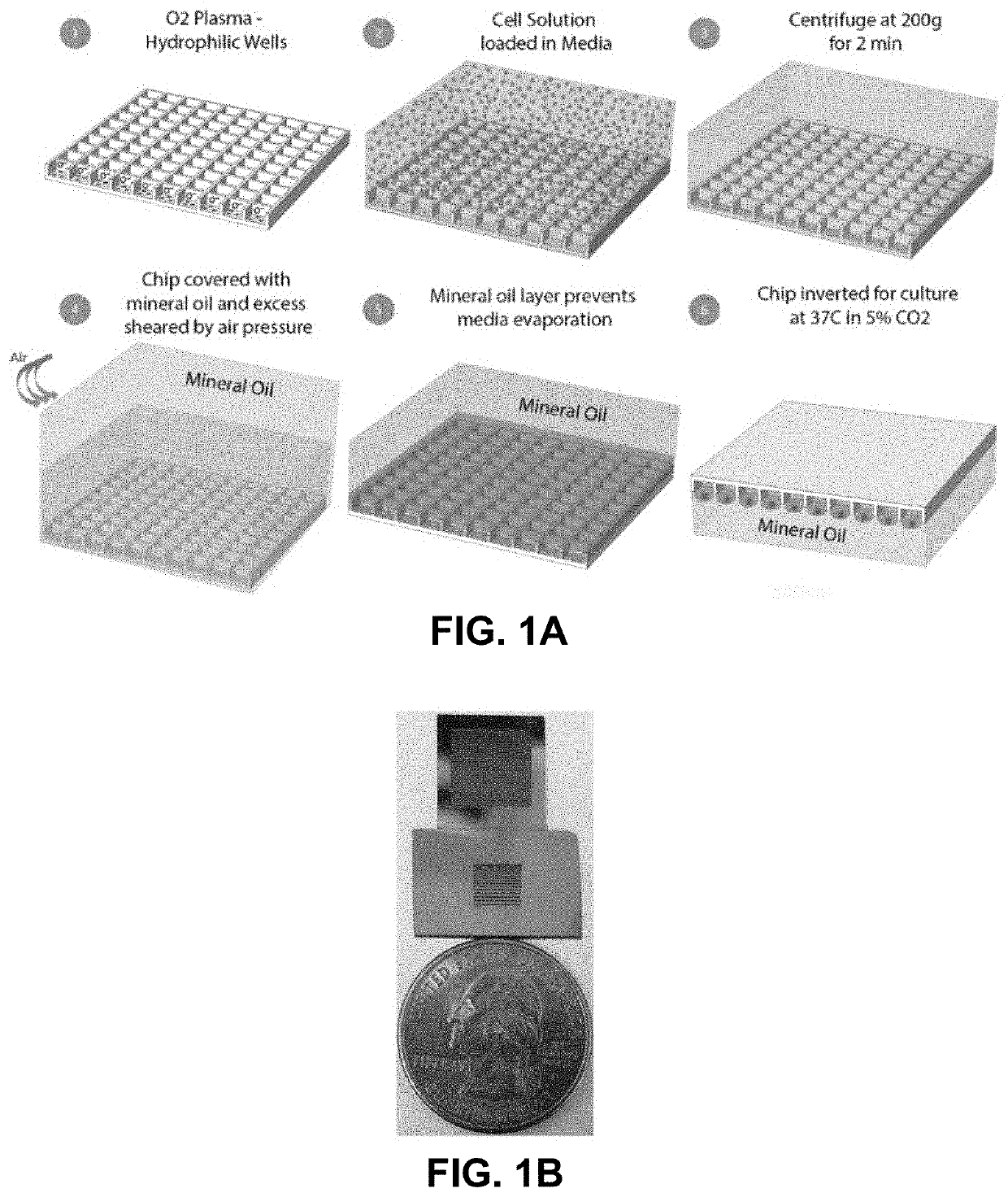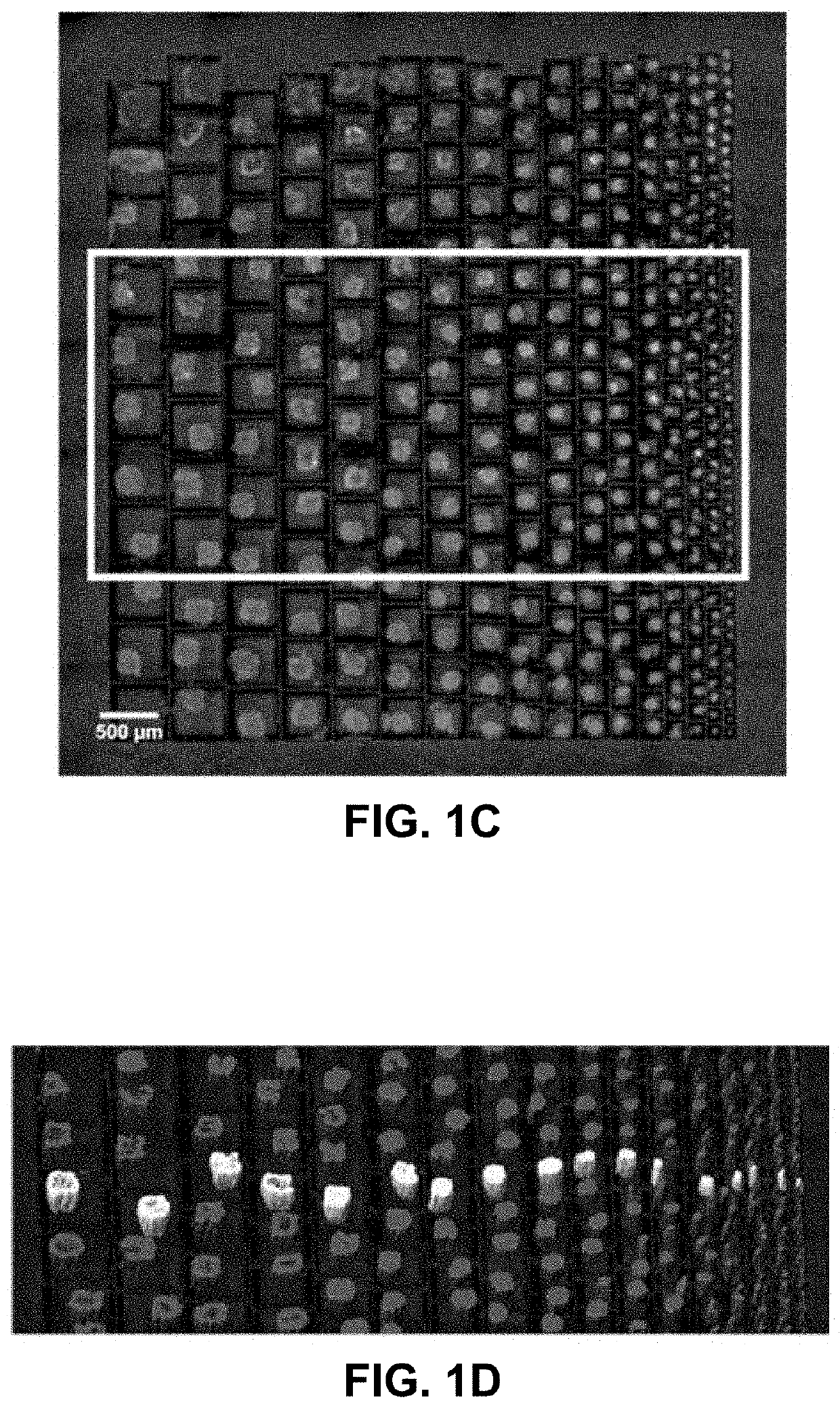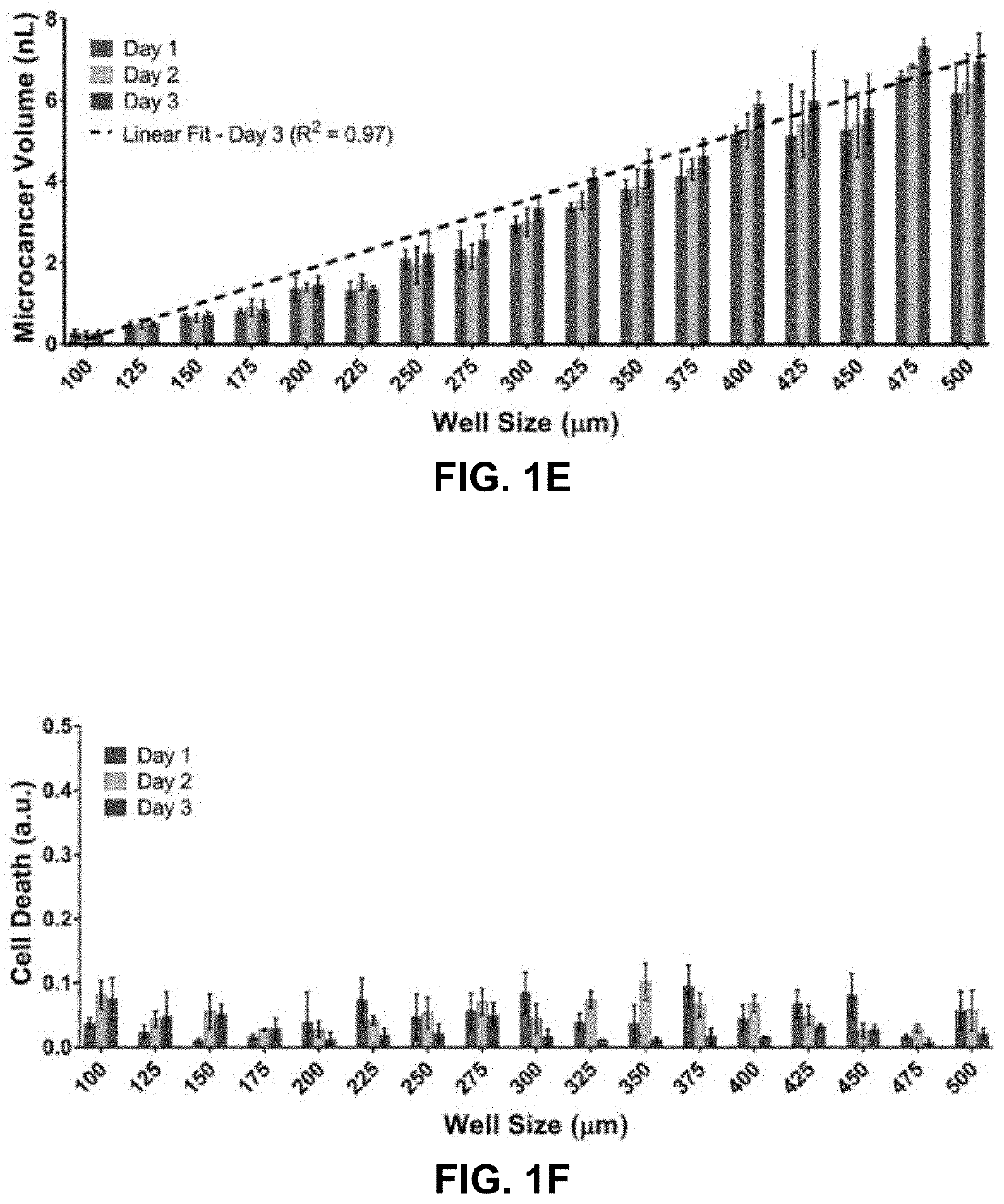Microchip high density hanging drop three-dimension culture platform
a three-dimensional culture and microchip technology, applied in the field of microchip high density hanging drop three-dimensional culture platform, can solve the problems of complex and potential toxic effects, limited broad practical application, and inability to replicate the important features of three-dimensional (3d) conditions in conventional two-dimensional monolayer cultures, etc., to facilitate tissue physiological function, rapid test of many drugs in real time, and wide range of effects
- Summary
- Abstract
- Description
- Claims
- Application Information
AI Technical Summary
Benefits of technology
Problems solved by technology
Method used
Image
Examples
example 1
Hang Drop Culture Platform
[0078]Several microchip designs are fabricated based on a silicon substrate. The microchips contain an array of silicon microwells of varying dimensions etched to a depth of 120 μm. The silicon surface was oxidized after the formation of the wells. FIG. 1A shows the platform design and schematic of on-chip cell seeding protocol. Panel 2, for clarity, does not illustrate the removable reservoir used to reliably position the cell solution loaded in media over the microwells. The entire chip is less than the size of a quarter and FIG. 1B shows two chip designs, one with an array of 900 microwells with a constant well size of 300 μm (side length of well) and the other with a well size gradient in which the well side lengths were varied from 100 to 500 μm. This system is readily scaled to a larger size and a higher number of individual wells. The spacing between each well was maintained at 20 μm. Each individual well in this array will downstream act as an isola...
example 2
Cell and Tissue Culture Size Control
[0079]To evaluate the platform's ability to form and culture microcancer spheroids on chip of different sizes, LN229 cells were first seeded on the well size gradient chip and examined the survival profiles of the formed microcancers over time. A real time imaging compatible cell death indicator green dye (Celltox, Promega) and a cell membrane staining red dye (PKH, Sigma Aldrich) were added to the media to quantify cell death in the microcancer tumor volume with time. Tile and z stack imaging was performed for each day of culture to volumetrically map the green and red volumes within a micro-well. Volumetric mapping of the green and red dyes was performed on Imaris software, and final individual well tracking was performed using MATLAB. The cell death for each microcancer was normalized to its own culture volume to account for well-to-well variations in cell numbers. FIG. 1C shows a fluorescence microscope image of a high throughput culture of LN...
example 3
Harvesting 3D Cultures from Chip for Genomic Analysis
[0083]The present system is in an open format with an immiscible layer of fluid over the array. The system, therefore, is compatible with harvesting the formed 3D cultures from the chip. To do this, the chip is first submerged in media (e.g., on the order of 1 mL) to remove the residual oil layer from the top of the array. Then, the 3D cultures are removed such as by pipetting and aspirating the volume from the chip. In this manner, as desired, any cell and tissue culture can be removed without disturbing any of the other cell and tissue culture contained in other microwells. Of course, the system provided herein is also advantageously configured to obtain a number of real-time parameters to characterize cell and tissue parameters (e.g., growth, response to drug, etc.) without having to remove the cell and tissue from the microwell.
PUM
| Property | Measurement | Unit |
|---|---|---|
| depth | aaaaa | aaaaa |
| volume | aaaaa | aaaaa |
| depth | aaaaa | aaaaa |
Abstract
Description
Claims
Application Information
 Login to View More
Login to View More - R&D
- Intellectual Property
- Life Sciences
- Materials
- Tech Scout
- Unparalleled Data Quality
- Higher Quality Content
- 60% Fewer Hallucinations
Browse by: Latest US Patents, China's latest patents, Technical Efficacy Thesaurus, Application Domain, Technology Topic, Popular Technical Reports.
© 2025 PatSnap. All rights reserved.Legal|Privacy policy|Modern Slavery Act Transparency Statement|Sitemap|About US| Contact US: help@patsnap.com



